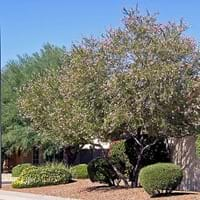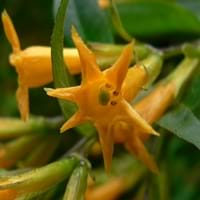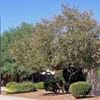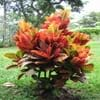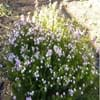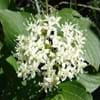Life Span
Perennial
Perennial
Origin
Southwestern United States, Mexico
Central America, South America
Types
Not Available
not available
Habitat
Desert, Dry areas, Semi desert
Temperate Regions
USDA Hardiness Zone
7-9
8-15
Sunset Zone
3b, 7, 8, 9, 10, 11, 12, 13, 14, 18, 19, 20, 21, 22, 23
H1, H2, 16, 17, 21, 22, 23, 24
Habit
Upright/Erect
Arching/Fountain-shaped
Flower Color
White, Yellow, Purple, Pink, Lavender
Gold
Flower Color Modifier
Multi-Color
Not Available
Leaf Color in Spring
Green
Green
Leaf Color in Summer
Green
Green, Dark Green
Leaf Color in Fall
Green
Dark Green
Leaf Color in Winter
Not Available
Dark Green
Leaf Shape
Linear
Lance-shaped to oblong
Plant Season
Spring, Summer, Fall
Spring, Summer
Sunlight
Full Sun
Full Sun, Partial Sun
Type of Soil
Loam, Sand
Loam, Sand
The pH of Soil
Acidic, Neutral, Alkaline
Acidic, Neutral
Soil Drainage
Well drained
Well drained
Bloom Time
Late Spring, Early Summer, Summer, Late Summer, Early Fall
Early Spring, Spring, Late Spring, Early Summer
Tolerances
Drought, Heat Tolerance
Drought
Where to Plant?
Ground, Pot
Ground, Pot
How to Plant?
Seedlings, Stem Planting, Transplanting
reseeds
Plant Maintenance
Medium
Medium
Watering Requirements
Average Water Needs, Requires regular watering
Needs very little water
In Summer
Lots of watering
Lots of watering
In Spring
Moderate
Moderate
In Winter
Average Water
Average Water
Soil pH
Acidic, Neutral, Alkaline
Acidic, Neutral
Soil Type
Loam, Sand
Loam, Sand
Soil Drainage Capacity
Well drained
Well drained
Sun Exposure
Full Sun
Full Sun, Partial Sun
Pruning
Remove damaged leaves, Remove dead branches, Remove dead leaves
Prune regularly, Remove damaged leaves, Remove dead branches, Remove dead leaves
Fertilizers
fertilize every 2-3 weeks while growing
All-Purpose Liquid Fertilizer
Pests and Diseases
Insects, Red blotch
Pests and diseases free
Plant Tolerance
Drought
Drought
Flower Petal Number
Single
Single
Foliage Texture
Fine
Medium
Foliage Sheen
Matte
Glossy
Attracts
Birds, Hummingbirds, Butterflies
Hummingbirds, Butterflies
Allergy
Asthma
poisonous if ingested
Aesthetic Uses
Beautification, Showy Purposes
Cottage Garden, Farmland, Showy Purposes, Wild gardens
Beauty Benefits
Not Available
Not Available
Environmental Uses
Air purification, Food for insects
Air purification
Medicinal Uses
Anti-fungal, Cough, Wounds
No Medicinal Use
Part of Plant Used
Flowers, Leaves, Stem
Not Available
Other Uses
Decoration Purposes, Showy Purposes, Used as Ornamental plant, Used for its medicinal properties
Traditional medicine
Used As Indoor Plant
Yes
No
Used As Outdoor Plant
Yes
Yes
Garden Design
Container, Feature Plant, Mixed Border
Foundation, Hedges, Mixed Border, Topiary, Bonsai, Espalier, Tropical
Botanical Name
CHILOPSIS linearis
CESTRUM aurantiacum
Common Name
Desert Willow
orange jessamine
In Hindi
रेगिस्तान विलो
Cestrum aurantiacum
In German
Wüsten Weide
Hammersträucher
In French
desert Willow
Cestrum aurantiacum
In Spanish
Desert Willow
Cestrum
In Greek
έρημο Willow
Cestrum aurantiacum
In Portuguese
Willow deserto
Cestrum aurantiacum
In Polish
desert Willow
Cestrum aurantiacum
In Latin
desert Willow
Cestrum aurantiacum
Phylum
Not Available
Magnoliophyta
Class
Magnoliopsida
Magnoliopsida
Family
Bignoniaceae
Solanaceae
Clade
Angiosperms, Asterids, Eudicots
Angiosperms, Asterids, Eudicots
Tribe
Tecomeae
Not Available
Subfamily
Not Available
Not Available
Number of Species
Not Available
Importance of Desert Willow and Cestrum aurantiacum
Want to have the most appropriate plant for your garden? You might want to know the importance of Desert Willow and Cestrum aurantiacum. Basically, these two plants vary in many aspects. Compare Desert Willow and Cestrum aurantiacum as they differ in many characteristics such as their life, care, benefits, facts, etc. Every gardener must at least have the slightest clue about the plants he wants to plant in his garden. Compare their benefits, which differ in many ways like facts and uses. The medicinal use of Desert Willow is Anti-fungal, Cough and Wounds whereas of Cestrum aurantiacum is No Medicinal Use. Desert Willow has beauty benefits as follows: Not Available while Cestrum aurantiacum has beauty benefits as follows: Not Available.
Compare Facts of Desert Willow vs Cestrum aurantiacum
How to choose the best garden plant for your garden depending upon its facts? Here garden plant comparison will help you to solve this query. Compare the facts of Desert Willow vs Cestrum aurantiacum and know which one to choose. As garden plants have benefits and other uses, allergy is also a major drawback of plants for some people. Allergic reactions of Desert Willow are Asthma whereas of Cestrum aurantiacum have poisonous if ingested respectively. Having a fruit bearing plant in your garden can be a plus point of your garden. Desert Willow has no showy fruits and Cestrum aurantiacum has showy fruits. Also Desert Willow is not flowering and Cestrum aurantiacum is not flowering . You can compare Desert Willow and Cestrum aurantiacum facts and facts of other plants too.
